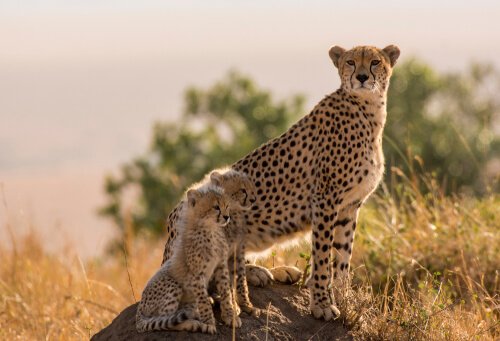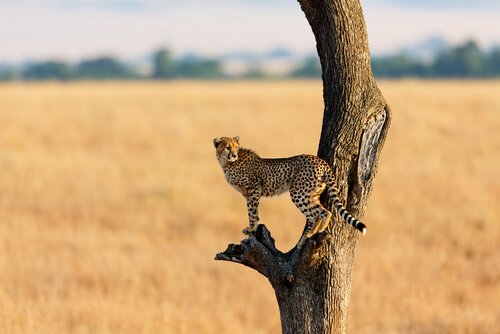The conservation of the cheetah
Known to be one of the fastest animals in the world, conservation of the cheetah shows that, without research and support for this species, not even the cheetah can escape extinction . This species of Old World feline is threatened by several factors, and one of them is its peculiar life history.
Conservation of the cheetah: its delicate genome
About 12 000 years ago, in the late Pleistocene, there were cheetahs in America, Europe and Asia. Their abrupt extinction of all these areas produced what is known as a bottleneck : with few survivors of a species, the genetic variability is reduced, something that the descendants suffer and that has consequences for their reproduction and its resistance to infectious diseases, something very important for the conservation of the cheetah.
This scarce genetic variability and homozygosis, even higher than in species such as the mountain gorilla, has had consequences: cheetahs have enormous problems reproducing themselves, at least in captivity.
A study published in 1981 revealed that the sperm concentration of semen from several cheetahs was 10 times lower than that of cats , and that 71% of these had morphological alterations.
 gure>
gure> To these problems joins the jealousy of the cheetah, which is difficult to differentiate, which makes it difficult to decide when to bring two animals together in the breeding and conservation programs of the cheetah.
It also influences the conservation of the cheetah in terms of its resistance to diseases of infectious origin: the cheetah is very susceptible to diseases suffered by domestic cats, such as feline infectious peritonitis , which causes 60% of casualties compared to 2% that cause in cats. Interestingly, due to this genome, cheetahs do not reject skin grafts, even if they are from other individuals.
Current situation of the cheetah
Conservation of the cheetah Today, more than 10,000 cheetahs remain on the planet, a third of them in Namibia. In the last 100 years, 90% of the cheetahs on the planet have disappeared.
Cheetahs are one of the wild cats that most resort in Africa to attack cattle, perhaps because they are the most likely to have their prey taken by other species such as lions or hyenas. This has caused a conflict similar to that we have in Spain with the Iberian wolf: at the end of the 20th century, this conflict ended the lives of almost 1,000 animals each year.

Another threat to the conservation of the cheetah, in addition to the infectious diseases, is its illegal traffic due to mascotism.
To remedy this, associations such as Cheetah Conservation Fund carry out education activities, responsible ecotourism and support for local livestock through the use of autochthonous breeds of dogs to protect livestock .
The dog that is used to protect livestock from this predator, and thus encourage the conservation of the cheetah, is the Turkish kangal dog , which has proven to be a great ally of local livestock farmers, which greatly reduces the conflict between both parties.


